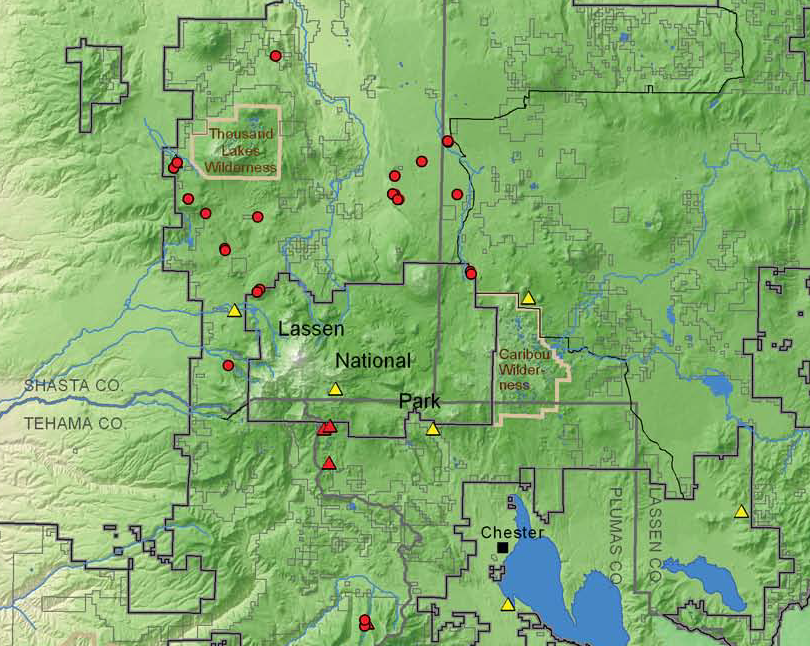California Academy of Sciences
Herpetological Surveys of the National Forests

From about 1997 to 2006, the Herpetology Department conducted biotic surveys in the national forests of California. Working cooperatively with U.S. Forest Service biologists, we surveyed new and old sites striving to document the herpetofauna of California's public lands. This cost-sharing partnership covered over 200 miles of streams, resulted in over 4,000 new specimens, which has increased the specimen records in six national forests by an average of 45% (and in some national forests by more), and has documented several new county records. It is an example of the value of applying museum-based resources to the mandate of management agencies. Increased collaboration with natural history museums will improve the decision-making capabilities of resource managers and increase the efficacy of their conservation efforts.
Natural history museum collections are an invaluable source of biological information often underutilized but potentially useful to resource managers. Both resource managers and museum scientists share the goal of understanding species distributions, particularly those threatened. Museum specimens document the occurrence of a given species at a specific locality, providing a voucher, or physical evidence, of species distributions, and allowing taxonomic identification to be independently verified by experts. Museum records are unique sources of historical occurrence data, information that can be critical for determining species baseline distributions. Integrating data from museum records with spatial analysis tools such as Geographic Information Systems (GIS) greatly expands the power of museum specimen information. Mapping localities of museum records and survey efforts can quickly identify uninvestigated areas, while more advanced analyses result by adding information layers on vegetation, climate, etc.
When we started our focus on the national forests, aggregator portals like VertNet and GBIF were still pie-in-the-sky dreams so finding georeferenced historic voucher data for the national forests was challenging. We had to rely on directs requests to the Museum of Vertebrate Zoology (thanks to Barbara Stein and David Wake) and LA County Museum for herp data that we manually georeferenced with USGS Topoquads (1:24k) both paper and digital versions.
Thanks to all the CAS personnel who made the surveys possible and memorable: First of all, co-principal investigator and herpetologist extraordinaire Jens Vindum. Field crews included Chris Feldman, Rhonda Lucas, Lindsay Henwood, Dan Mulcahy, Jim Parham, Ricka Stoelting, Jeff Wilkinson, Kevin Wiseman. None of these efforts would be possible without our Forest Service partners from the six national forests where CAS conducted surveys. These biologists made these Agreements truly cooperative: Marilyn Tierney (Tahoe NF), Christina Hopkins (Plumas NF), Cindy Roberts (Plumas NF), Phil Strand (Sierra and Sequoia NF), Holly Eddinger (Sierra NF), Chirre Keckler (Mendocino NF), Linda Tatum Angerer (Mendocino NF), Melanie McFarland (Lassen NF), and Ken Roby (Lassen NF).
Reports filed to the National Forests

download links below!
2004. Amphibians and Reptiles of the Lassen National Forest: Results of 02-CS-11050650-029 The 2003 California Academy of Sciences Survey. Report to US Forest Service, Dept. of Agriculture, Susanville, CA. 175 pp. [PDF- XX MB missing maps]
2003. Amphibians and Reptiles of the Sierra and Sequoia National Forests. Report to the US Forest Service, Dept. of Agriculture, Porterville, CA, 53 pp. [PDF - 19 MB]
2001. Amphibians and Reptiles of the Sequoia National Forest: Results of CCS-00-CC-11051322-034, the 2000 California Academy of Sciences Survey. Report to the US Forest Service, Dept. of Agriculture, Porterville, CA. [PDF - 2.6 MB]
2000. Amphibians and Reptiles of the Mendocino National Forest: Results of the 2000 California Academy of Sciences Survey. Report to the US Forest Service, Dept. of Agriculture, Willows, CA. [PDF - 7.5 MB]
1999. Amphibians and Reptiles of the Tahoe and Plumas National Forests. Report to the US Forest Service, Dept. of Agriculture, Quincy, CA, 164 pp. [PDF - scan 3 MB]